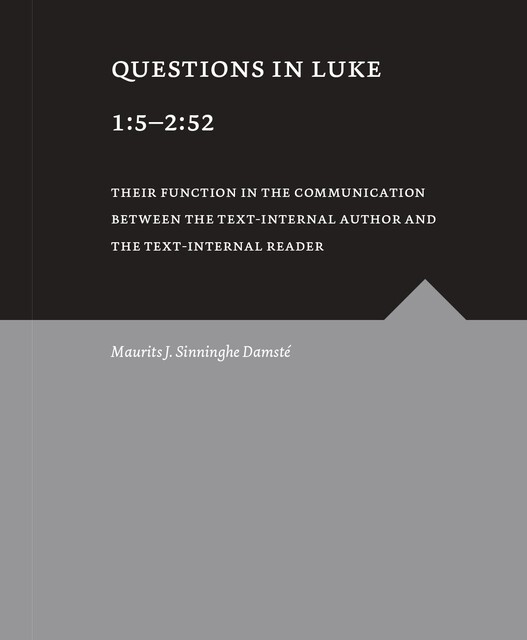Questions in Luke 1:5-2:52
Their Function in the Communication between the Text-internal Author and the Text-internal Reader
My dissertation studies the questions that are found in Luke 1:5–2:52. It does so in order to find out how they function in the communication between the author and the reader of the text.
To analyse the text, I employ the Communication-Oriented Method. This method makes two assumptions. Firstly, it holds that the syntax of the text forms the basic structure in which all communication takes place. This means that the ‘grammar’ of the text is first scrutinised before the meaning of words and the communication itself are investigated. Secondly, this method makes a strict distinction between the text-external (or historical) author/reader, and the text-internal author/reader. The text-internal author/reader are textual constructs and, therefore, found only within the text. In my dissertation I focus only on the communication between the text-internal author and the text-internal reader. In other words, I only analyse the communication within the text, leaving the historical author/reader to other fields of research. Regarding the text-internal communication, the text-internal author can communicate with the text-internal reader directly, or indirectly (via the characters in the narrative).
After having first determined the basic structure of the text, I go on to identify the questions that are found in the text. Questions can usually be identified by words such as ‘why’, ‘what’, and ‘how’. Sometimes, the meaning of the text points at questions that are not explicitly mentioned in the text.
I then make a communication analysis of the text, focussing on the identified questions. My analysis leads me to the following conclusions. In the communication with the text-internal reader, the text-internal author uses questions to focus this reader’s attention on the character John, to stimulate the reader to identify with the character Mary, to emphasise the relation between the character Jesus and the temple in Jerusalem, and to prepare this reader for further misunderstandings regarding Jesus’ identity in the narrative to come.
Generally, the questions found in Luke 1:5–2:52 function at the level of the characters as a communication ‘motor’, with the goal of promoting, prolonging, and intensifying the communication between the characters. At the level of the text-internal author/reader, the questions in Luke 1:5–2:52 function as a narrative ‘motor’, driving the text-internal author’s narrative by setting further action and communication in motion.
Recent Activity
Project Kickoff
Metadata
- isbn9789403738123
- publisherOpen Press Tilburg University
- publisher placeTilburg, The Netherlands
- rights
- rights holderMaurits Sinninghe Damsté
- rights territoryThe Netherlands
- doi
We use cookies to analyze our traffic. Please decide if you are willing to accept cookies from our website. You can change this setting anytime in Privacy Settings.


